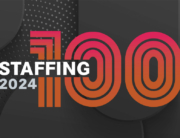Then release upgrades to keep you strategic plan fresh, user friendly
Strategic planning is necessary but often put off, like upgrading your firm’s technology when it no longer meets your needs. It’s often just easier to immerse yourself in the day-to-day tactical business of running your firm. Securing as many job orders as possible and filling as many of them as you can is how we make money in this business. But like the front-office system that doesn’t have a CRM platform, a staffing firm without a defined growth strategy is missing a critical enabler of success.
Throughout my career I’ve worn three hats when it comes to strategic planning. As a branch manager I was charged with executing someone else’s plan. That was always followed by an eyebrow-raising response, “how come I didn’t get a vote?” As an executive of a national staffing firm I was an active participant in the planning process. That was followed by frustration as there was never any shortage of great ideas but never enough resources to bring them to life. And as a consultant to the staffing industry I design and facilitate creative strategic planning methodologies arm-in-arm with my clients. Watching them realize the fruits of their labors is gratifying.
Through each of these lenses I’ve concluded there are three conditions that impede success:
- The “plan” lives only in the owner’s head; stakeholders don’t know the strategy, there is no planning process, and there is no written strategic plan.
- The process is in place and a plan is written, but only the senior leadership team is involved.
- The process is in place and the planning involves multiple stakeholders, but the execution never happens.
Want to avoid these pitfalls? Approach it like tech firms do: Write good code once and release upgrades to keep it fresh and user-friendly.
Five Steps to Writing Strategic Planning Code
1. Develop a boilerplate. In contractual law, the term “boilerplate language” describes the parts of a contract that are considered standard. In computer programming, boilerplate is the sections of code that have to be included in many places with little or no alteration. Similarly, you want to write basic code for your strategic planning process so that the annual exercise is easy to replicate each year.
At the core of your boilerplate should be methodologies for capturing the voice of all stakeholders.
- The customer perspective. If you already survey your clients regularly, aggregate their feedback, isolate common themes, and address the punch list in your strategy session. If you don’t have a process for measuring client satisfaction, put one in place first. Designing strategy without understanding what’s important to your buyer is like Apple launching the iPad without understanding what motivates users of a tablet pc to buy one (See “Recast the Mold,” December 2011, Staffing Industry Review).
- Those on your front lines. Think bottom-up leadership. If you hand your branch managers, sales reps, account managers and recruiters a key initiative to implement that they had no vote on, you run a very high risk of failure. If they help build it, they’ll own it. A simple but well-crafted internal survey can accomplish this through the anonymity your staff will appreciate.
- The voice of the leadership team.
2. Construct the company vision, mission and core values, and then upgrade them each year to reflect subtle changes in the fabric of the organization over time.
3. Candidly assess the strengths, weaknesses, opportunities and threats to the organization. It’s helpful to engage a third-party facilitator to challenge group-think when conducting a SWOT analysis. What your team thinks is a competitive differentiator may really be a vanilla solution every staffing firm touts.
4. Establish clear and measurable strategic imperatives. But select no more than three to five to tackle within the next fiscal year to avoid trying to boil the ocean. Any more and you run the risk of your team being overwhelmed and abandoning the execution completely. Through the voice of the customer, the voice of the front lines and the voice of the leadership team, you’ll likely have a long list of important issues. It’s at this point members of the leadership team needs to roll up their sleeves and move through a deliberate process in a planning session to arrive at the most critical imperatives that will drive the company’s growth over the next year. Breakout sessions, team brainstorming and calculating the potential return on investment for each initiative will help you distill the list to the most critical imperatives.
5. Project-manage the execution. Your plan is now written, and it’s time for the hard work of execution to begin. How can you ensure success? Approach executing the plan like a project. Every technology project needs a strong project manager (PM) to hold those doing the work accountable for its success. This is perhaps the best kept secret to smart and successful execution of strategy. If there’s a capable internal resource with the capacity to step up and hold people accountable for who will do what and by when to ensure the strategic imperatives are brought to life, great. If not, rent one (engage a contractor). There should be a detailed project plan with key initiatives and tasks associated with each, an owner of each task and deadlines for completion. Routine status calls should be held with the entire execution team run by the PM. Issues and roadblocks should be addressed to ensure progression and completion of milestones. If you treat strategy execution like a project that must be managed, it will get done. Otherwise people go back to their day jobs, nothing gets done, and those on the front lines roll their eyes (“we knew nothing would really change…”).
Keep It Fresh
Now you’ve written the code and your boilerplate is in place. How do you keep the annual strategic planning session fresh? Again, model the best tech companies and constantly innovate. Add new features to your boilerplate every year to keep your users excited.
Here are some proven approaches to infusing your planning session with creativity and ensuring your team stays fully engaged year after year:
- Select your favorite business book, have everyone read it before attending, and build the planning session around the key concepts of the book. Your leadership team will adopt your beliefs around drivers of success and everyone will share a common language that lives on throughout the coming year.
- Hold the meeting in an atypical place. Some of my clients invite their leadership teams to their cabin in the mountains or rent homes along the beach to combine strategic planning with relaxation and fun. It may cost you a little more but it will pay big dividends in terms of engagement and loyalty. After all, who wants to sit in a cold hotel conference room under fluorescent lighting for two days straight? That’s a recipe for disengagement.
- Break up the session with healthy fun. Instruct the team to dress in casual workout wear (don’t tell them why in advance) and hire a personal trainer to share tips on managing their energy throughout the workday and then facilitate a stretch break to avoid that mid-afternoon slump.
- Have a team of thrill-seekers? Take them to ride go-carts and eat burgers instead of heading to the same old steakhouse for a sit-down dinner.
- Do something fun exploring the city you hold your meeting in. One of my clients put together an “Amazing Race” scavenger hunt during their planning session. I learned more about Chicago that night than I could have in a week there, and the team had a blast competing to win the race (my team won, in case you’re wondering).
It’s like the dreaded technology conversion — getting there can be painful, but once you adapt, it’s all good. Now that your firm’s strategic plan code is written and the boilerplate is developed, you’ll find the annual planning exercise more user-friendly. Everyone reaps the benefits of increased efficiency and effectiveness.







